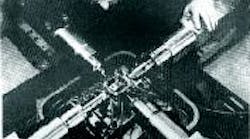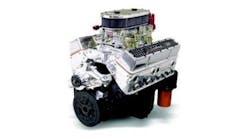Eleven years after the end of World War II, and in the middle of one of the coldest times in the Cold War, American Machinist editors were among the first outsiders who were invited to see the high-tech operations at General Electric Company's Instrument Department in West Lynn, Mass. That facility produced one of the leading devices for which secrets were kept at that time— gyroscopes and other aircraft instruments used in the emerging aerospace industry. Manufacturers of aircraft gyroscopes had three particular problems: restrictions on the size and weight for gyroscope packages; the challenges of dealing with ever present vibration from the aircraft carrying the gyroscopes; and the need to ensure that the gyroscope mechanism did its job without failing. The editors of American Machinist reported on the operations at the West Lynn plant, and had photographs to go with their report. Details of the report included the fact that gyroscope gimbal rings were precision-cast of Monel, then a relatively new material that was tough to machine, requiring the machinist to use single-point tools in precision boring machines. The gimbal rings required rigid support so they could be machined to tolerances of 0.0002 in. for size and 0.00003 in. total on centerline. To assure precise alignment for the gyroscope axes — within 0.00001 in.— the editors reported that four-way boring machines were equipped with tools supplied by Carboloy—at that time a unit of GE. Using a multiple-bit tool, three diameters were turned simultaneously on the gimbal. One tool plunge-faced the collar, another bored the inner diameter and the third bored the socket.
Latest from Retrospective
Latest from Retrospective
Sept. 19, 2006
Aug. 17, 2006
Aug. 17, 2006
July 5, 2006

